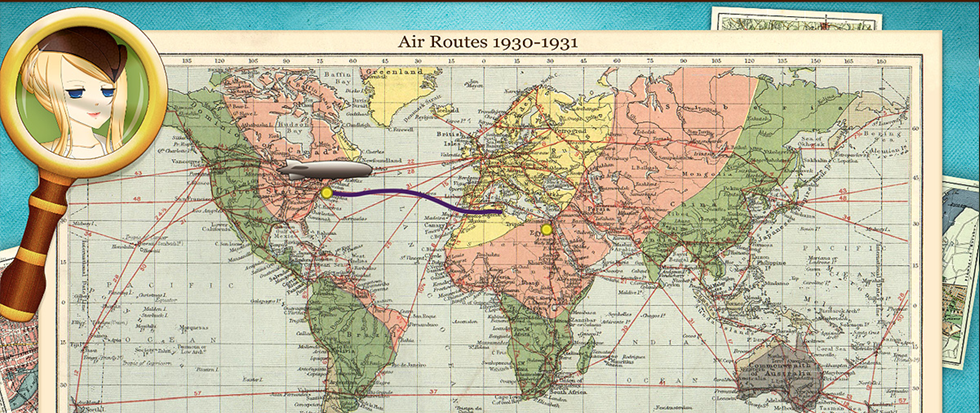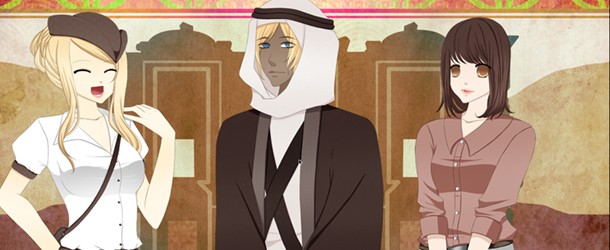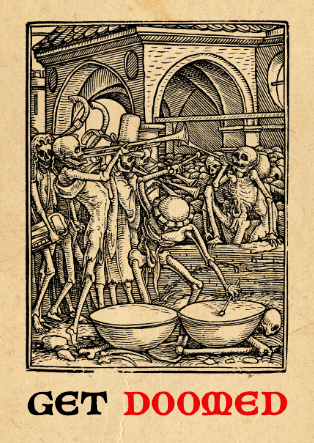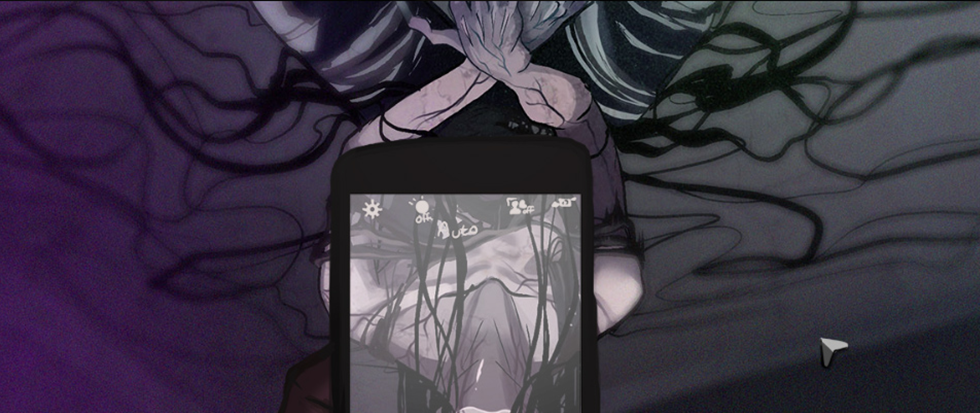
1931: Scheherazade at the Library of Pergamum
1931: Scheherazade at the Library of Pergamum is a dating/time management sim targeted towards people who saw the Indiana Jones movies and wondered, “But what if Indy was a girl?”
Like many VNs with a resource management aspect, the player will follow one character through the course of a year in their life. In this case that character is a young archaeology student named Scheherazade Keating (mercifully shortened to Sadie) who lives with her aunt in New York City following the disappearance of her archaeologist parents. On the night of her high school graduation, Sadie discovers a man breaking into her family apartment and (after enthusiastically chasing him from the premises) uncovers a mysterious puzzle box hidden in her father’s study. She and her family believe it may hold clues to the disappearance of the Keating parents, prompting Sadie to undertake a series of adventures around the world over the course of the next year.
I feel like people are often skeptical about this game because it doesn’t make a strong first impression. The art of 1931: Scheherazade is all right. It’s not amazing by any stretch of the imagination, but perfectly serviceable. My biggest gripe is that the characters usually only have a handful of sprites that pop instead of cross-fading to new positions, and some don’t even have unique sprites but rather different facial expressions that have been drawn onto the same sprite. There were a variety of characters, but I definitely noticed when the game reused the exact same lady or gentleman, right down to the hairstyle and outfit color, for different minor parts over several different adventures. The background art for each level reminded me of a minimalist stage backdrop you’d use in a theater show; perfectly nice, but no wow factor. Overall the art was fine; I didn’t hate it or love it. If anything, I wish there had been a little more art to show the difference between, say, downtown New Orleans and the swamps outside the city proper, since there is just one background for each area.
The music was acceptable. All of the tracks were pretty good and each country you visited had different tracks, but it wasn’t mind-blowing. I liked the jazzy music in New York best, but it became repetitive after a while and you could clearly hear where it was looping. There were also issues with the sound suddenly transitioning to a different track when the mood of the scene shifted suddenly. I didn’t hate it, but I’m not dying to go back and play any of the tracks on repeat. Additionally, 1931: Scheherazade is a game that will take hours of your life, and I honestly had to put it on mute by hour 10 of the game. Take that as you will.

But music and art are really minor components when compared with the gameplay, and that much 1931: Scheherazade did pretty well. The mechanics for this game are fairly competent and easy to understand. Each adventure that Sadie undertakes is structured to have a section of story followed by obstacles that have to be completed in order to advance that particular story line. Some stories will be short with only three or four obstacles, and some have up to twelve total (though mercifully there are breaks between bunches of these). These obstacles can only be completed by having enough points in a particular skill like perception, moxie, or hope, to name some of the approximate two dozen skills at Sadie’s disposal (and it’s worth noting that the game will let you see what obstacles are coming up next, so you can prepare appropriately). You can either train in an activity around town to get a permanent bonus to this skill, or you can look for inspiration cards that will give you a sizeable one-time bonus (though you can only carry a limited number of these cards). This is the part where careful management comes into play.
You can only train a skill up to level 100, which gives a max permanent bonus of 10. Especially in the early stages of the game it’s easier to mix leveling up with carrying around a pocketful of cards with one-time bonuses, but by the end of the game you need to have a good base level in skills and relationships with the other characters to ensure that you get higher level cards. There’s also a limit to how much you can train certain skills because of the passage of time in-game. Each day is broken into three parts, but Sadie is a full-time college student which limits the amount of time she can actually spending running around town to train these skills. The game also involves Sadie studying abroad throughout the year, so if you don’t finish an Egypt or Peru mission before returning home to New York, you won’t be able to complete the quest you were working on.
This might sound punishing, but often times you don’t actually need to have a score of 59 in listening or 36 in fisticuffs to pass an obstacle. Usually if you have enough points in the skill you’ll complete the obstacle with a bonus added to another skill; if you don’t have enough points then the subsequent dialogue will change a bit and Sadie suffers a point being added to her stress level, but you still move to the next stage of the adventure. There was one instance wherein I only had three turns to complete a story with several obstacles remaining before I left the area permanently, and I went through the obstacles even though I knew I didn’t have enough points in each needed skill to pass. I still beat them and was able to unlock the next stage of a particular storyline once I returned to New York. This isn’t always the case (as a general rule, assume that any obstacle which requires the perception skill actually needs that many points or you’ll have to try again later), but it does make you wonder why you should even bother carefully training certain skills or farming cards if you can just brute force your way through so many challenges and often have little impact on the story.

It probably sounds like 1931: Scheherazade is a fairly lackluster VN; so-so art and music along with a limited time frame for challenges that don’t necessarily need you to be good at a skill to beat them don’t exactly make for a stellar game. But I currently have over 30 hours of 1931: Scheherazade logged according to Steam, and I’m nowhere near tired of it. And that’s for the simple reason that the game is so much fun.
1931: Scheherazade is overflowing with thrills at every stage. Sadie is spunky and headstrong, and never met an adventure that couldn’t be improved by her involvement. She is surrounded by a cast that each add a unique flair of their own whenever they get caught up in Sadie’s shenanigans, whether it’s Anna helping her search through the ruins of a lost underground civilization, Nigel inviting her on a trip to investigate Spanish doubloons, or Aunt Evelyn questioning people at the best speakeasies 1931 New York City had to offer. Some people might find the dialogue cheesy or dislike how neatly some of the stories wrap up, but I personally enjoyed the abundance of snark and the way each case closes with a brief newspaper blurb about the most recent bout of shenanigans, as seen through the eyes of a local writer/Sadie Keating fan.
I think that little touch really encompasses the heart of the game. 1931: Scheherazade creates a world where a young woman can run around and excel at school, maintain healthy relationships with her friends and family, and go on crazy escapades in her spare time, all while looking fabulous. And everyone acts like this is perfectly normal. The game taps into your inner kid that liked to pretend you were climbing mountains to find ancient ruins or steal gold from pirates without fear of being reprimanded for acting too crazy. Sadie is the embodiment of a little girl who was determined to grow up and have adventures all over the world without worrying about finances or reprimands, and might possibly have a boyfriend too (you know, provided he didn’t get in the way of adventures).
There is so much story to offer here, and it can change each time you play. My first run of the game was focused on building up relationships with Aunt Evelyn and Sadie’s best friends while trying to figure out what happened to her parents, but on the next run I discovered you could befriend and potentially romance a mummy you meet on a trip to Egypt (and yes, he did expound at length about how archaeology is just glorified grave robbing). 1931: Scheherazade has pirates, possessed statues, car chases, coded messages, voodoo, and anything else you could want in the world of a 1930s archaeological daredevil. There is exactly as much story and adventure as you are willing to look for and seek out while playing. I’m already excited to see what happens next time when I try to romance the British spy and get him to help me on Sadie’s exploits across the globe. This is a fun adventure game; I don’t need museum quality art and Grammy-winning music as long as I can track down cursed objects and make high-speed getaways through the streets of New York City or the swamps of Louisiana.
1931: Scheherazade at the Library of Pergamum is yet another VN that somehow ended up in my Steam library without me being able to recall exactly what chain of events transpired to make that happen. I’m fairly certain it was either in a bundle or on sale, because there’s no way that I would have paid the full $25 for a VN that I knew nothing about. Having played it multiple times now, however, I can say that spending $25 will easily get you your money’s worth. If you’ve been looking for something to feed your inner adventurer, this is the game for you.





